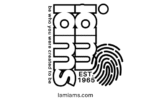The year 2025 was meant to mark a definitive turning point—a moment of stabilization after years of pandemic-related uncertainty, inflation surges, and geopolitical disruptions. But for many business owners, this year is anything but hopeful. Quietly, without the dramatic headlines of past economic crashes, thousands of businesses—both large and small—are shuttering. From neighborhood coffee shops and family-run bakeries to legacy retail giants, the trend is alarming. Unlike the explosive collapses of previous recessions, 2025’s economic contraction is more like a slow bleed. And unless we pause to diagnose what’s really happening, the ripple effects could become waves that are too large to manage.
At first glance, it’s tempting to blame a single factor: inflation, perhaps, or high interest rates. But the truth is, the business landscape in 2025 is being reshaped by a complex, layered convergence of issues. Weak consumer demand, changing buyer behavior, unrealistic investor pressure, and the digital transformation that has permanently altered how people shop and engage—all of these have converged into what we now recognize as a quiet storm for commerce.
Let’s unpack this collapse and identify the signs, causes, and—more importantly—the strategies that business owners can adopt to survive it.
Consumer Demand Has Lost Its Pulse
Ask any small business owner what’s changed in the last six months, and you’ll hear the same answer: people just aren’t buying like they used to. The strength of any economy lies in its consumers, and right now, that base is wavering. Consumer demand in 2025 has fallen sharply across nearly every discretionary category. While necessities like groceries and healthcare remain stable, sectors such as apparel, dining, travel, and personal services are reporting 20% to 40% drops in average customer spending.
What’s causing this collective pullback?
For one, consumers are deeply anxious. Despite gains in employment and wages in 2024, inflationary pressures continued to erode purchasing power. People feel like they’re earning more but getting less. Rents have climbed in metropolitan areas, grocery bills are up 15% year-over-year, and utility costs have risen silently month by month. Even for households that aren’t technically “struggling,” the psychological weight of uncertainty is making people cautious.
Debt is another factor. Credit card debt in the United States surpassed $1.2 trillion earlier this year, an all-time high. With average APRs sitting above 20%, even minor balances are becoming burdens. Consumers aren’t just spending less—they’re actively trying to climb out of financial holes. This internal budget tightening hits businesses hardest because it’s silent and steady. When consumers buy less, companies feel it first in slow-moving inventory and shrinking profit margins.

Inflation Is More Than a Number—It’s a Trust Breaker
Much of the economic conversation in recent years has revolved around inflation. But while economists focus on charts and indicators, business owners are experiencing a more personal side of the crisis. It’s not just that materials cost more—it’s that customers are growing distrustful of pricing altogether.
Take shrinkflation, for instance—the practice of reducing product size while maintaining the same price. While it may seem like a clever accounting strategy to offset cost increases, the consumer sees it differently. They feel tricked. A snack bag that used to offer 12 ounces now offers 9.5. A café latte that once filled a tall paper cup now stops an inch from the lid. These may be subtle shifts, but over time, they add up to something more dangerous: the erosion of customer trust.
When consumers begin to feel that every brand is squeezing more and giving less, loyalty weakens. And when price sensitivity spikes, the natural instinct is to stop spending altogether or move toward cheaper, commoditized options—often found online. This cycle becomes a trap for businesses trying to maintain margins without losing their audience.
The Investor Mirage: Short-Term Thinking in a Long-Term Game
Another overlooked pressure point in 2025 is investor behavior. With interest rates still climbing, investors are becoming more selective about where they place their capital. In theory, this would mean more disciplined funding choices. In practice, it’s become a nightmare for founders and business leaders who are now caught between two conflicting demands: conserve cash and grow revenue fast.
This pressure creates unrealistic expectations, especially in startup and mid-market sectors. Founders are being told to reach profitability earlier while still delivering venture-scale growth. Brick-and-mortar businesses are expected to digitize overnight without increasing operational costs. Retailers are urged to launch new product lines while cutting marketing budgets.
It’s not just unfair—it’s structurally unsustainable.
This imbalance between investor demands and real-world economic challenges forces business owners to make short-sighted decisions: slashing staff, delaying product improvements, or closing physical locations to appease stakeholders. Over time, these sacrifices erode the business’s core strength—its people, its innovation, and its value proposition.

Consumer Habits Have Shifted—And Many Businesses Missed It
If you still think your competition is the store across the street, think again. In 2025, your competition lives in your customer’s pocket—on their phone, through their feed, and inside their app store. The modern consumer has evolved, and many businesses haven’t kept up.
Shopping today is mobile-first, review-driven, and socially validated. Customers expect convenience, yes—but also alignment. They want brands that align with their values. They look for ethical sourcing, transparency, and cultural relevance. They’re not just buying what you sell—they’re buying why you exist.
And here’s the tough part: these shifts didn’t happen overnight. They’ve been evolving for years. But many business owners were too focused on short-term survival to adapt. Others assumed that returning to “normal” meant returning to 2019. It didn’t.
One example? The explosion of direct-to-consumer brands using TikTok to build rabid followings. These aren’t just cute startups with clever videos—they’re generating real revenue. A cosmetics brand that started with zero budget two years ago now does over $500,000 a month in revenue—largely thanks to loyal Gen Z customers who discovered them via reels and short-form video storytelling.
The takeaway is clear: the consumer has changed. If your business hasn’t, you’re already falling behind.
The Macro Environment Is Not Friendly
Beyond consumer sentiment and investor demands, the larger economic environment in 2025 is creating its own barriers. Interest rates remain elevated, making it harder for businesses to borrow. For small and medium-sized firms trying to invest in expansion, buy inventory, or even keep the lights on, this means fewer options and higher risk.
Commercial real estate is also undergoing a seismic shift. In cities across America, storefront vacancies are reaching record highs. Yet landlords, also squeezed by their own financing obligations, are reluctant to renegotiate leases. This creates a stalemate that favors no one. Meanwhile, supply chain disruptions, though less chaotic than during COVID, are still not fully resolved. Businesses sourcing internationally are still facing delays, cost fluctuations, and inconsistency in product availability. When you can’t predict when your inventory will arrive—or how much it will cost—it’s nearly impossible to plan.
The E-Commerce Effect: Fast, Frictionless, and Fierce
E-commerce isn’t new, but in 2025, it has reached a level of sophistication and dominance that leaves many traditional retailers scrambling. It’s not just about having a website. Today’s online shopping experience is personalized, AI-curated, and seamless across devices. The best platforms know what you want before you search. They remember your habits, suggest bundles, and offer 24-hour support without a single human in sight.
For a small business still using a basic template with a 3-day shipping window and no live chat, the gap is becoming impossible to bridge.
But e-commerce is more than a threat—it’s also a massive opportunity. Businesses that lean into digital tools, embrace influencer partnerships, and create immersive online experiences are thriving. The problem is that many business owners don’t know where to start, or they’re afraid to invest in something they don’t fully understand.
Cost-Cutting vs. Business Building
In moments of economic stress, it’s natural to look for ways to trim expenses. But there’s a fine line between lean operations and reckless reduction. The instinct to slash marketing budgets, lay off staff, and close underperforming locations may seem like smart risk management—but often, these moves accelerate decline.
A better approach? Focus on what your customers value most. Double down on your best-selling products. Improve service. Streamline the backend with automation. Identify tools that save time without sacrificing quality. Talk to your loyal customers—they’ll tell you what’s worth saving and what can go.
This Is Not a Recession—It’s a Restructuring
Here’s the truth: businesses aren’t closing simply because the economy is “bad.” They’re closing because they weren’t built to survive the new one.
The rules have changed. The power dynamics have shifted. Customers have more choices, better tools, and louder voices. And they’re using them.
To survive 2025—and beyond—businesses must evolve, not retreat. That means understanding today’s consumer. It means investing in brand, not just product. It means embracing technology as a lifeline, not a luxury.
Conclusion: There’s Still Time—But Not Much
The silent collapse of 2025 is a wake-up call. It’s not just a downturn—it’s a warning. Businesses that fail to adapt are being left behind quietly, without headlines or bailouts. But for those willing to evolve, reimagine, and rebuild, the opportunity has never been clearer.
In this new era, success will not belong to the biggest or the loudest—but to the most agile, the most empathetic, and the most visionary.
You still have time. Just don’t wait too long to change.











